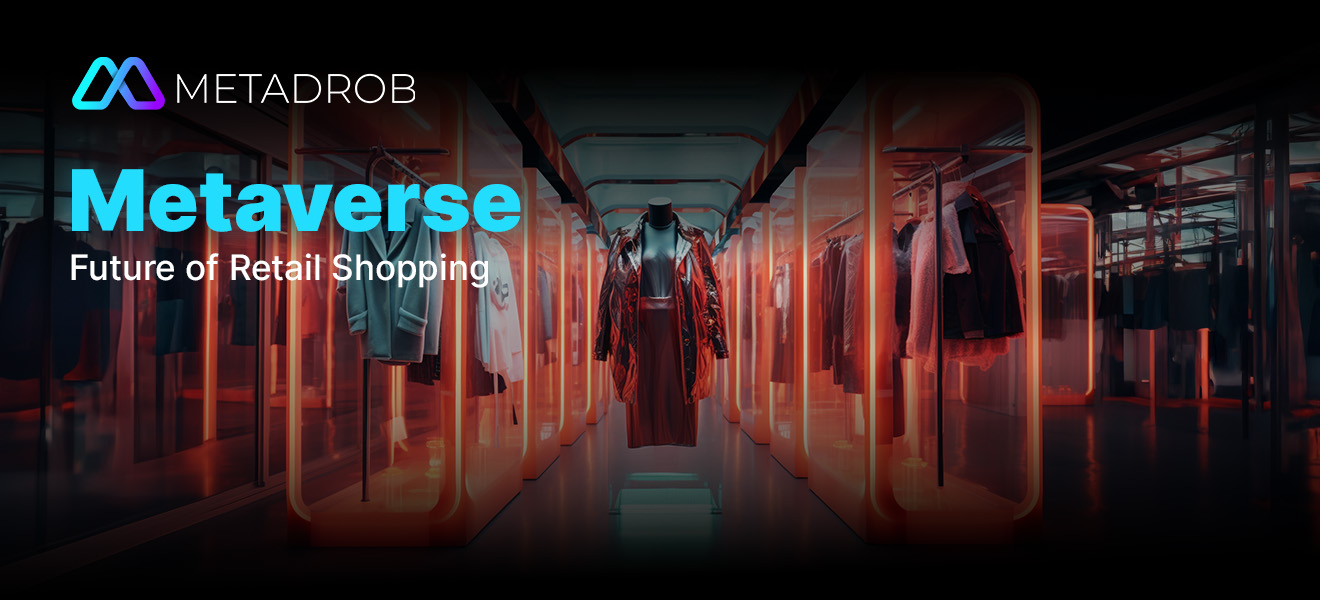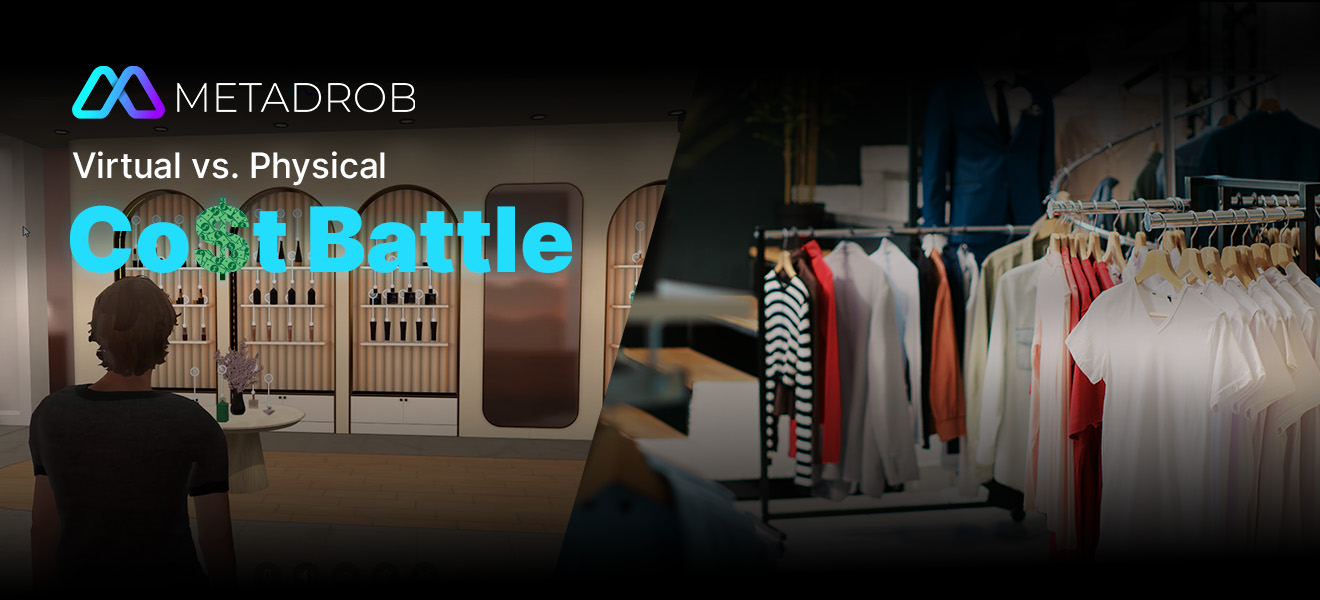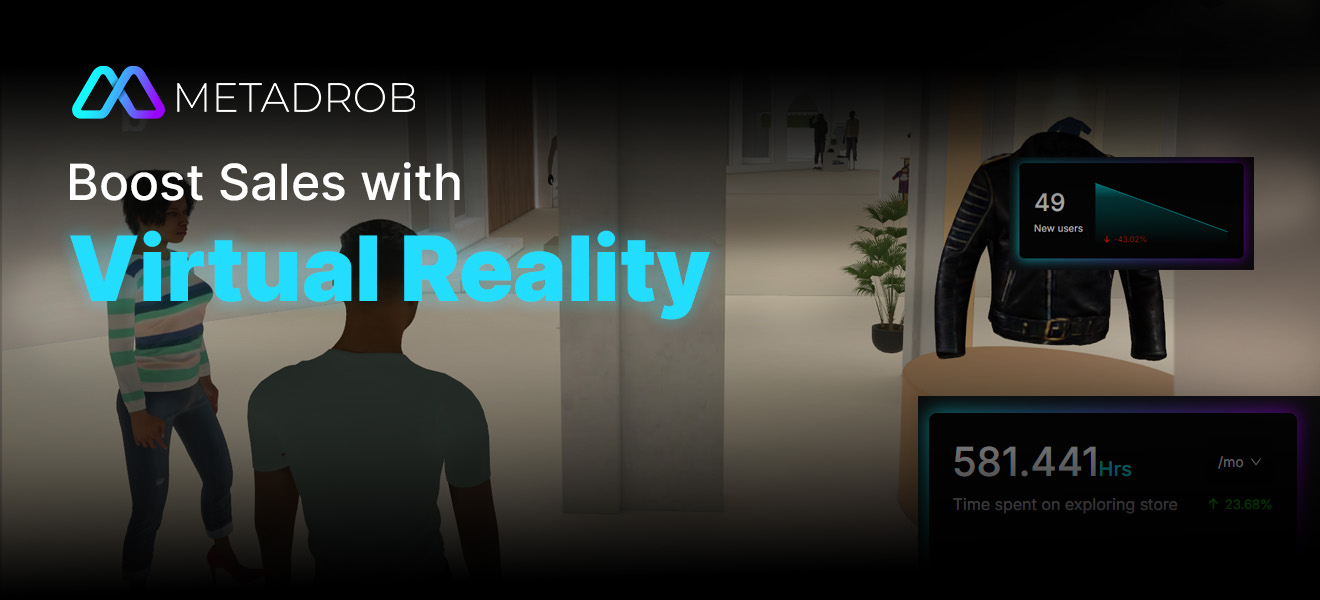Leveraging Data Analytics to Drive E-Commerce Success

With advancements like mobile payments and one-click purchasing over the past few years, retail has improved significantly. Consumers are currently interacting with virtual reality on a new level, from interactive product demos that let them see things up close before buying them to personalized shopping recommendations based on their preferences.
According to research, the AR and VR market will hit $95 billion by 2025. Given this, virtual stores become a better way of engaging customers to sell products/services.
Retailers are embracing these immersive technologies to drive engagement and sales, which is significantly changing the way people shop. However, how does this result in a better clientele experience? In this blog, we’ll talk about how virtual reality is changing retail and how it can boost customer engagement for your brand or business.
Evolution of Customer Engagement With Virtual Stores: Customer Service Vs Clienteling
The establishment of virtual storefronts has helped to close the gap between online and in-store shopping in the quickly changing retail industry. Brands must distinguish the more personalized clienteling approach and traditional customer service as they step into this new era.
A few years ago, providing basic customer service was the main expectation placed on e-commerce platforms. However, as online shopping becomes more popular, customer demand for a more customized experience grows, giving rise to the idea of virtual clienteling.
Defining Customer Service:
- Reactive: Respond to particular questions or issues.
- Transactional: Focuses on pressing issues and requirements.
- Standard: Offers dependable answers to frequently asked queries.
Defining Clientele
- Proactive: Considers the wants and needs of the customer.
- Personalized: Adapts exchanges to specific clients.
- Relationship-based: Encourages enduring relationships with clients.
Key Differences:
| Features | Clienteling | Customer Service |
| Approach | Proactive | Reactive |
| Communication | Ongoing | One-time |
| Personalization | High | Low |
| Focus | Long-Term Relation | Immediate Needs |
Technology’s Role:
The ability to provide clienteling for digital commerce is mostly due to technology. Virtual assistants, social networking platforms, and live chat are examples of tools that let businesses interact with clients in real-time and offer tailored advice and assistance.
Furthermore, data analytics can assist in determining the tastes and behavior of customers, allowing companies to provide customized experiences. So, clienteling offers a more engaging and individualized approach that can greatly improve the virtual buying experience, even though customer service is still crucial for every organization.
Businesses can foster longer-lasting consumer interactions and achieve long-term success by comprehending the distinctions between these two ideas and using technology.
Virtual Stores Take Personalization To The ‘Next Level’ To Boost Customer Engagement
When compared to traditional stores, virtual stores can customize the buying experience for each individual customer because of their capacity to gather and analyze enormous volumes of data. The following are some ways that personalization can increase consumer engagement:
- Provide Customized Discounts: Virtual stores can provide focused discounts on relevant products by examining the past purchases and preferences of their customers.
- Give Location-Based Information In Real Time: Virtual stores can provide clients with up-to-date information about product availability in nearby physical locations and delivery choices by utilizing GPS technology. This convenience boosts conversion rates and improves the entire buying experience.
- Product Recommendations Based On Past Browsing Activity: Virtual storefronts can display customized product recommendations by monitoring a customer’s browsing activity. This raises the likelihood that customers will make additional purchases and assists them in finding new things in which they might be interested.
- Speak With Them In Their Preferred Language: Providing multilingual help shows that you care and comprehend your client’s needs while also demonstrating your dedication to inclusivity. This can be crucial for multinational firms that cater to a wide range of consumer demographics.
- Send Customized Emails: Customized emails can help you build a closer relationship with your clients. Examples of these include birthday greetings and invites to exclusive online events. These unique touches foster a feeling of loyalty and promote recurring business.
Virtual shops may provide customers with a more enjoyable and engaging buying experience by putting these customization techniques into practice. Long-term business success, improved conversion rates, and greater client loyalty can result from this.
Elevating Shopping Experience With In-Store Virtual Assistants
The retail industry will change quickly in the future, and online buying will become more and more popular. The smooth blending of online and offline components is one of the main forces behind this change. An excellent example of this convergence is the use of in-store virtual assistants, which provide a special fusion of convenience and personalized attention.
Giving in-store employees tablets or mobile phones allows companies to digitally link them to their e-commerce platforms. This makes it possible for retail employees to assist online consumers in real-time, even after hours. These virtual assistants may provide a tailored and educational shopping experience, whether they are exhibiting features or responding to inquiries about product specs.
Customers gain from this, and store personnel feel more secure and satisfied at work. Virtual assistants can contribute to the creation of a more dynamic and satisfying work environment by increasing sales opportunities and maintaining employee engagement. Virtual assistants in stores also provide consumers with a more engaging shopping experience.
Through a virtual tour of the store, customers may review product details and features and even get a firsthand peek at the product’s appearance. In the end, this can increase confidence and trust in online transactions, increasing sales and satisfying customers.
Virtual Store Contact Center: Convenience To Bridge Customer Engagement Gap
Virtual stores have changed the game by providing unmatched accessibility and convenience. However, in order to close the real connection gap with customers, a fully functional virtual store contact center is essential. This is where video chat emerges as one of the best techniques for increasing consumer interaction.
There is no denying the convenience of video chat. Customers may connect face-to-face with store workers, whether on the go or in the comfort of their own homes. Video chat also increases customer satisfaction by offering a more interactive and personalized experience. As evidenced by the fact that 70% of consumers value prompt and easy service, hassle-free customer assistance is essential.
Customers can save time and effort by using video chat to replace in-person retail visits. Further increasing efficiency, research has revealed that video calls are frequently shorter than live chat exchanges. Thus, closing the gap in consumer interaction requires a well-run virtual store contact center with services like video chat. Video chat can help organizations meet the changing expectations of today’s consumers by providing convenience and personalization.
Upselling and Cross-Selling: A Quick Way To Improving Virtual Shopping Experience
Upselling involves convincing consumers to buy an upgraded or more expensive version of the product they were originally going to buy. One way to upsell a customer is to promote a product with more features or a larger package size.
Conversely, cross-selling comprises suggesting related products that can improve the customer’s first purchase. An example of a traditional cross-selling opportunity would be to recommend a phone case in addition to a recently acquired smartphone.
Consider these tactics to make sure your upselling and cross-selling efforts are successful:
- Customization Is Essential: Utilize past purchases and consumer information to customize product recommendations. You may provide them with products that genuinely speak to them if you are aware of their preferences.
- Sensational Offer Texts: Create enticing messaging that emphasize the advantages of the suggested goods. To prevent overloading customers, use calls to action (CTAs) that are explicit and make sure that the frequency of communications is well-spaced.
- Prompt Suggestions: Present chances for cross-selling and upselling at the appropriate time. For example, it can be rather successful to recommend complementary products to a consumer who is ready to finish their purchase.
- Limited-Time Offers: Make customers feel pressed for time by providing special discounts or time-limited offers on suggested items. Customers may be encouraged to add them to their cart by doing this.
- Bundles of Complementary Products: Group related products together at a special price. Customers may receive additional value from this and be inspired to make larger purchases.
Virtual Try-On: Simplifying Shopping Experience Like Never Before
One of the main problems with online buying has been that you can’t physically touch or sample things before you buy them. Nevertheless, this obstacle has been resolved with the introduction of augmented reality (AR).
- Enhanced Customer Confidence: By enabling customers to see things in their own settings, augmented reality-powered virtual try-on features dramatically lower the chance that they would buy something that doesn’t fit or appear as expected.
- Personalized Buying: Customers can have a more customized buying experience by virtually trying on things to see how they appear and feel in real-world situations.
- Reduced Returns: By enabling customers to get a better idea of the size, fit, and appearance before making a purchase, virtual try-ons can reduce returns significantly.
- Enhanced Sales: By giving consumers a more interesting and dynamic purchasing experience, augmented reality-enabled virtual try-ons can increase sales.
Overall, virtual try-on is a game-changer for online retailers, offering a more convenient, personalized, and satisfying shopping experience for customers.
Want To Take Your Customer Engagement To The Same Level? Get Started With Metadrob
To sum up, virtual stores have become an effective means of increasing client interaction and increasing revenue. Through the utilization of the inventive functionalities provided by Metadrob’s comprehensive platform, retailers may craft captivating and dynamic encounters that effectively connect with their target market.
Metadrob’s gamification, sophisticated analytics, and smooth integration help companies improve their reputation, build stronger relationships with clients, and increase revenue. Partnering with Metadrob is the smart move if you’re prepared to increase client engagement.
Connect with Metadrob
Ready to take the first step towards unlocking opportunities, realizing goals, and embracing innovation? We're here and eager to connect.

+91 966-004-4020






